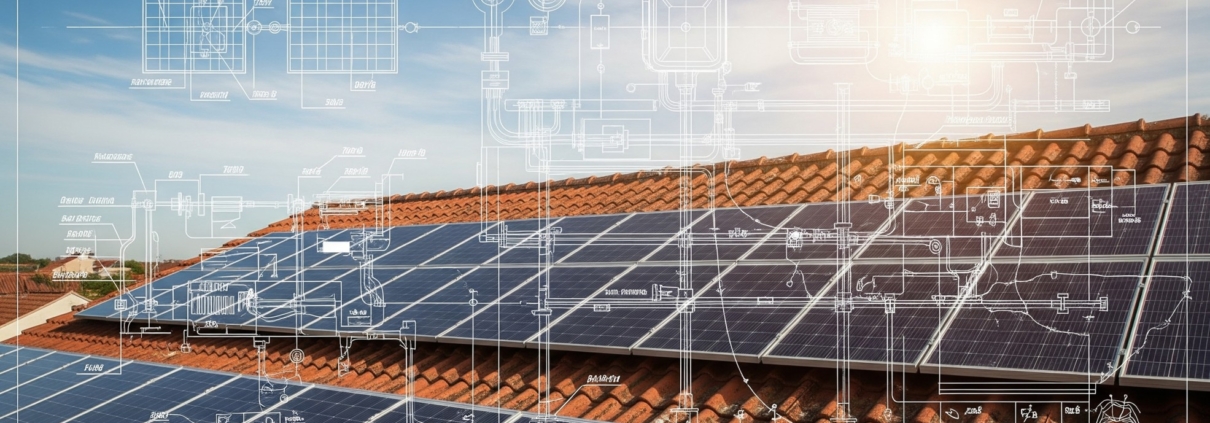Designing Solar Panel Systems: What You Need to Know
Switching to solar energy is no longer just a trend—it’s becoming a smart move for homeowners, businesses, and communities looking to cut energy costs and reduce environmental impact. But before you can enjoy the benefits of clean energy, one crucial step must come first: solar panel system design.
A well-designed system doesn’t just look good on paper—it ensures maximum efficiency, long-term savings, and smooth operation. In this article, we’ll explore the essentials of designing solar panel systems, why expert guidance matters, and how you can make the most of your investment.
Why Solar Panel System Design Matters
Think of a solar power setup like building a house. You wouldn’t just throw bricks together without a plan. The same goes for solar. Solar panel system design is the blueprint that makes sure your panels capture the most sunlight, match your energy needs, and work efficiently for years to come.
Without proper design, you could face wasted energy due to poor placement, higher installation costs from errors, and lower returns on investment. That’s why the design stage is one of the most important parts of going solar.
Key Elements of Solar Panel System Design
When planning your system, several factors play a big role in how well it will perform. Let’s break them down:
1. Energy Needs Assessment
The first step is understanding how much electricity your home or business consumes. By checking utility bills and peak usage times, a solar panel designer can size the system properly. Oversizing wastes money, while undersizing won’t cover your needs.
2. Site Evaluation
Location is everything. Roof orientation, shading from trees or buildings, and local climate all influence output. A solar panel design consultant typically visits the site to make sure the placement is ideal.
3. Panel Selection
Not all solar panels are created equal. Some are more efficient, some more affordable. Choosing the right type depends on your goals, budget, and available space.
4. Inverter Choice
Inverters convert sunlight into usable electricity. Whether you pick string inverters, microinverters, or hybrid models, the choice will affect efficiency and cost.
5. Battery Storage (Optional)
If you want energy backup during outages or to go off-grid, battery storage should be included in the design.
6. Compliance and Safety
Your solar system must meet local codes and safety standards. A professional solar panel designer ensures everything is compliant and future-proof.
DIY vs. Hiring a Solar Panel Design Consultant
Some homeowners consider designing their system themselves. While it might save money upfront, solar technology involves technical expertise. That’s why working with a solar panel design consultant is highly recommended.
Here’s why experts are worth it: accurate system sizing to ensure your system meets demand, optimized efficiency for maximum sunlight capture, cost savings by avoiding mistakes that could be expensive later, and peace of mind knowing your design will be safe and code-compliant. Think of it like hiring an architect to design your dream home—you want it done right the first time.
The Role of a Solar Panel Designer
A solar panel designer does much more than sketch layouts. They use advanced software to analyze shading, orientation, and energy use. Their role includes creating a detailed system layout, calculating expected energy output, choosing the right equipment for your site, and ensuring your system can expand in the future. Working with a skilled designer can make the difference between a system that simply works and one that performs at its peak for decades.
Common Mistakes to Avoid in Solar Panel System Design
Even with the best intentions, some designs fall short. Here are mistakes to watch out for: ignoring shading—even small amounts of shade can reduce panel efficiency; incorrect sizing—over- or under-sizing the system impacts performance; poor roof orientation—panels facing the wrong direction won’t generate optimal power; skipping professional advice—avoid the temptation to DIY without expertise.
How to Maximize Efficiency in Your Design
If you’re serious about getting the most from your investment, keep these tips in mind: use monitoring systems to track performance and identify issues quickly, plan for expansion by designing with extra capacity if your energy use might grow, choose high-quality equipment since it pays off in reliability and longevity, and maintain regularly by cleaning panels and checking components to keep efficiency high.
The Future of Solar Panel System Design
The solar industry is constantly evolving. With advancements in artificial intelligence, smart inverters, and high-capacity batteries, the design process is becoming smarter and more efficient. Soon, solar panel designers will be able to predict energy trends and adapt systems automatically for even greater savings.
Conclusion
Switching to solar energy starts with more than just buying panels—it starts with a plan. Solar panel system design is the backbone of a successful installation, ensuring your system delivers clean, affordable, and reliable energy. Whether you choose to work with a solar panel design consultant or hire an experienced solar panel designer, investing in professional design is the smartest step you can take. By doing so, you’ll not only maximize your energy savings but also enjoy peace of mind knowing your system is built to last. The sun is free. The energy is limitless. And with the right design, your solar journey can be truly powerful.



Leave a Reply
Want to join the discussion?Feel free to contribute!